Artemisia Gentileschi in Genoa, a ramshackle exhibition between biographism and inappropriate shows
The very recent exploit of Costantino D’Orazio as curator of ancient art exhibitions has caused great surprise: the well-known essayist, contemporary art historian, popularizer and television personality who has been on the shields for years, and for a long time engaged in a curatorial activity that focused exclusively on contemporary art, has suddenly found himself simultaneously ringing up the curatorship of no less than four ancient art exhibitions. More specifically, in the last five months D’Orazio has presented himself as curator of an exhibition of painted ceramics in Ragusa, the exhibition on Artemisia Gentileschi in Genoa, one on still life in Asti, and an exhibition on love with works from the sixteenth to the eighteenth centuries in Terni, all of which opened between July and November of this year. Of course, there is no problem with reinventing oneself as a curator of ancient art exhibitions at almost 50 years of age, and there is also no problem if one of the country’s leading cultural institutions, namely the Palazzo Ducale in Genoa, decides to entrust the season’s flagship exhibition to a curator who comes from another field: if the project is solid, if the selection is of quality, if the itinerary holds up, if the team put together by the curator is composed of experts on the subject, then on paper the exhibition should succeed even if it is a substantially new experience for the curator. However, this is not the case with Artemisia Gentileschi: Courage and Passion, the exhibition that the rooms of Palazzo Ducale in Genoa are offering to its public until next April.
In the past few days, the exhibition has been engulfed in harsh controversy (and, in the weeks before, the Asti exhibition had also cashed in on harsh criticism: it has to be said that starting one’s career as a curator of ancient art with two out of four exhibitions attacked is not exactly the best), because of the way the itinerary presents the violence suffered by Artemisia Gentileschi at the hands of Agostino Tassi. But this is not the only problem with the Genoese exhibition, which in a hypothetical ranking of the worst exhibitions of the year would perhaps manage to earn the top spot: despite a scientific committee that includes experts such as Vittorio Sgarbi, Anna Orlando and Riccardo Lattuada, despite the presence of some works never before exhibited to the public, despite some important loans, one will find oneself visiting an exhibition that does not hold up, is often incoherent, and gives the impression of having been arranged without particular care. Artemisia Gentileschi: Courage and Passion seems constructed as one would construct a mediocre TV docufilm : an itinerary set largely on blunt biography and anecdote, a tour itinerary that is dull, convoluted and with too many unnecessary digressions, a banal, confused and sensationalist popularization project that reiterates the usual clichés about the story of Artemisia Gentileschi, adding little not only in comparison with past exhibitions, but also in comparison with the vast amount of books, films and documentaries that have been produced on the seventeenth-century painter. And one of the first clichés is precisely that of the violated woman who “only thanks to her talent” manages to “shake off prejudice”: this, essentially, is the image of Artemisia Gentileschi that is drawn from the exhibition. Now, it seems appropriate to recall that a biography of Artemisia written by the erudite Cristofano Bronzini (the document was recently published by scholar Sheila Barker), roughlyroughly between 1615 and 1620 in Florence, and therefore probably under the supervision of the painter herself (Bronzini, author of a work Della dignità e nobiltà delle donne (On the Dignity and Nobility of Women), in fact had the opportunity to meet several female artists in person), does not make the slightest mention of the rape suffered by theartist, and perhaps not only because it must have seemed unseemly to tell that story in a text that presented a sort of idealization of Artemisia, but certainly also because Artemisia herself would have liked to appear as a young woman with a talent for painting and whose artistic physiognomy was comparable to that of a Sofonisba Anguissola or a Lavinia Fontana, two artists with a decidedly less stormy past than that of her unfortunate colleague. And even Baldinucci, in his News of the Drawing Professors, calls her a “virtuous woman”: this is probably how she would have wanted to be remembered.
Another cliché, the idea that Artemisia Gentileschi, to quote the panel introducing the public to the exhibition, contributed “profoundly to the renewal of painting, in the footsteps of Caravaggio.” in fact it should by now be taken for granted that, as talented as Artemisia may have been, and as original as some of her high points may have been (not many, and the most important of these, the Judith of Naples and Florence, is not in the exhibition), her unquestionable exceptionalism is linked above all to the public recognition she managed to gain in her time and to the’approach she had towards the work, according to the reasons well illustrated by Elizabeth Cropper in her essay included in the catalog of the exhibition that in 2013 the Metropolitan in New York dedicated to Artemisia and her father Orazio, but also according to the excellent reconstruction that Yuri Primarosa provides in his essay in the catalog of the Genoa exhibition (Primarosa’s contribution is one of the rare highlights of this exhibition): “the exceptionality of Artemisia Gentileschi’s artistic and biographical experience,” the scholar writes, “resides, ultimately, in the special condition she had carved out for herself: That of being able to decide her own fate and elevate herself to the rank of ’Lady,’ always living above her means and addressing all her men and many of her patrons in the first person.”
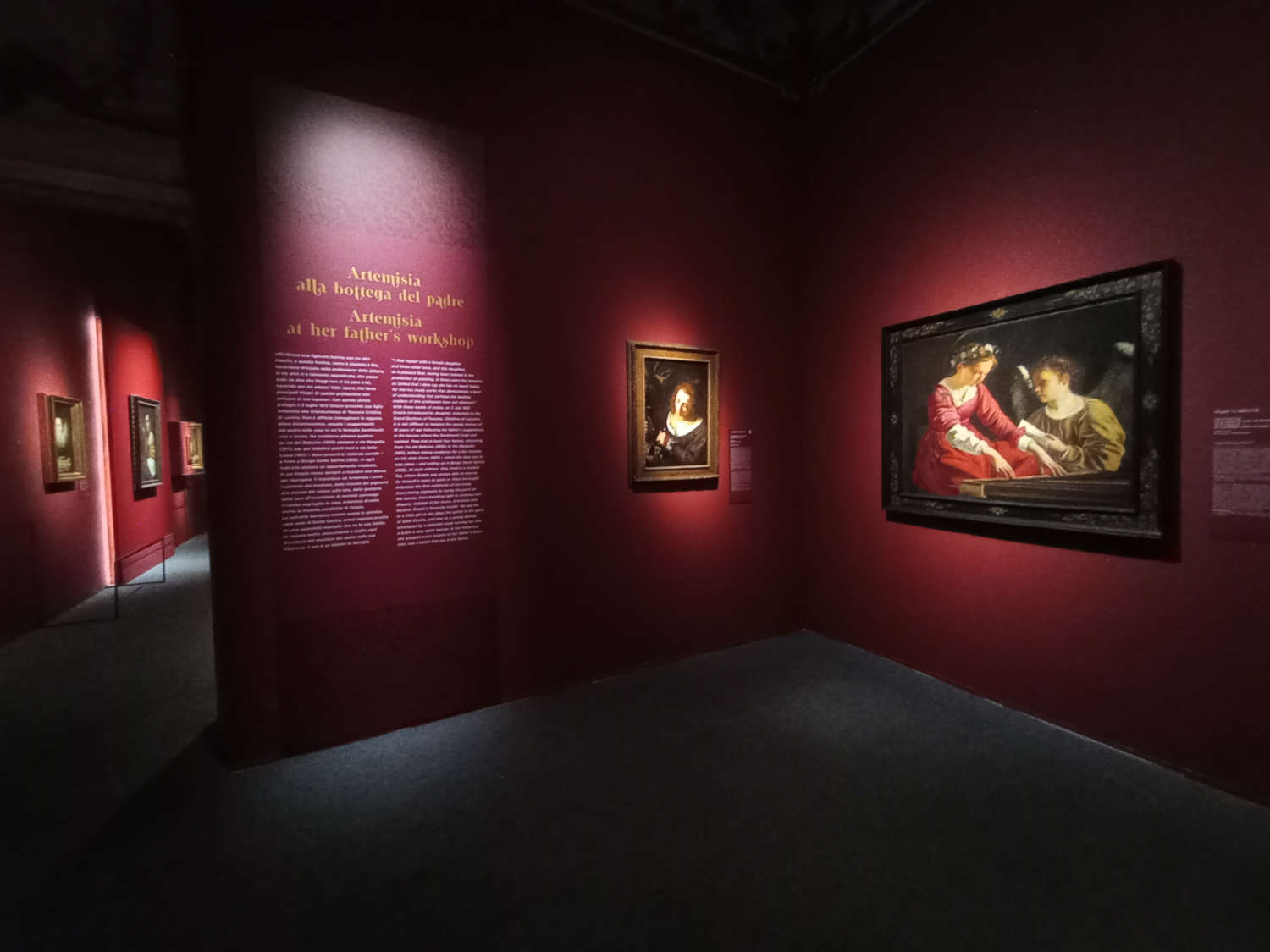 Arrangements of
Arrangements of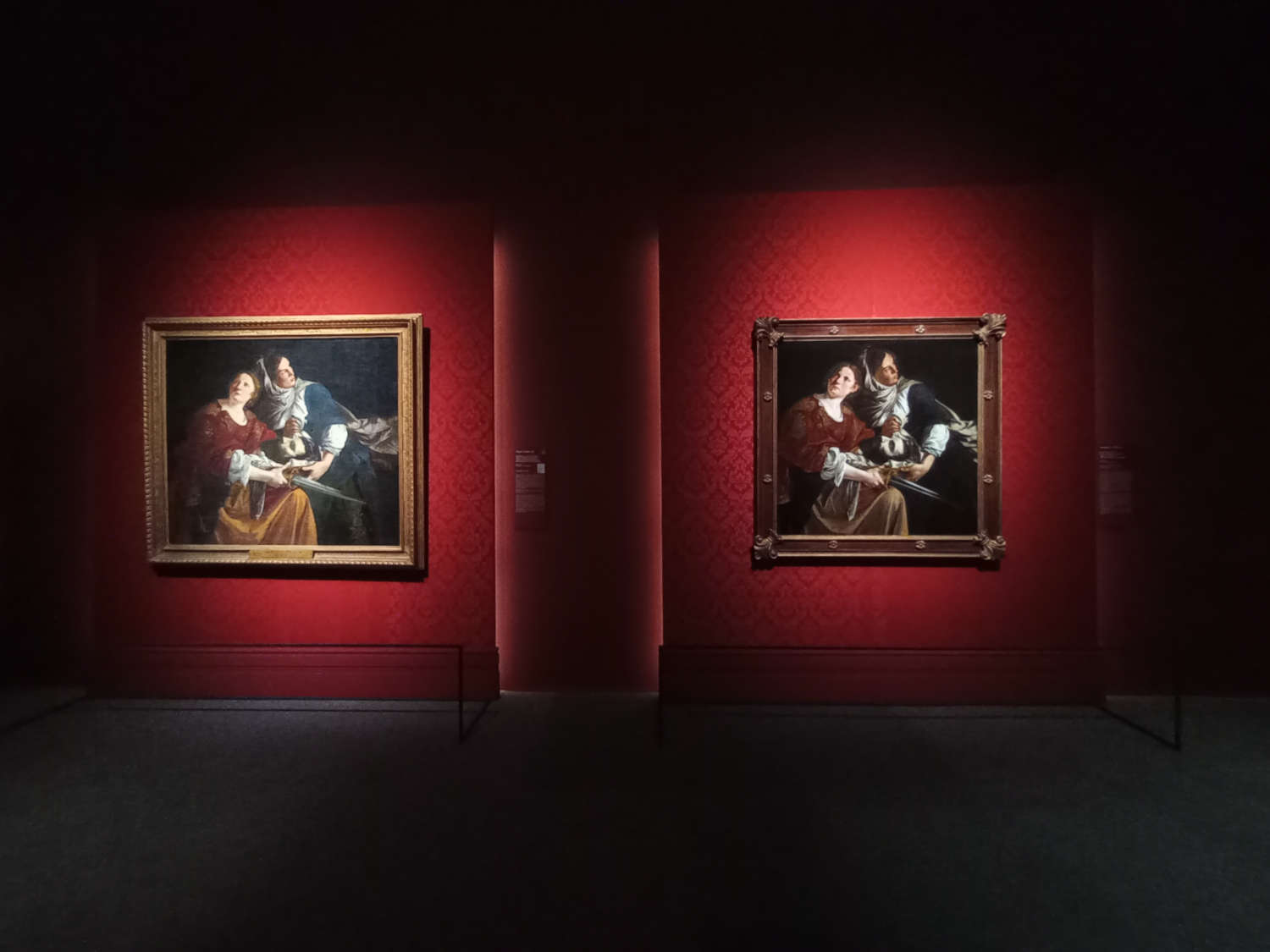 Arrangements of the exhibition
Arrangements of the exhibition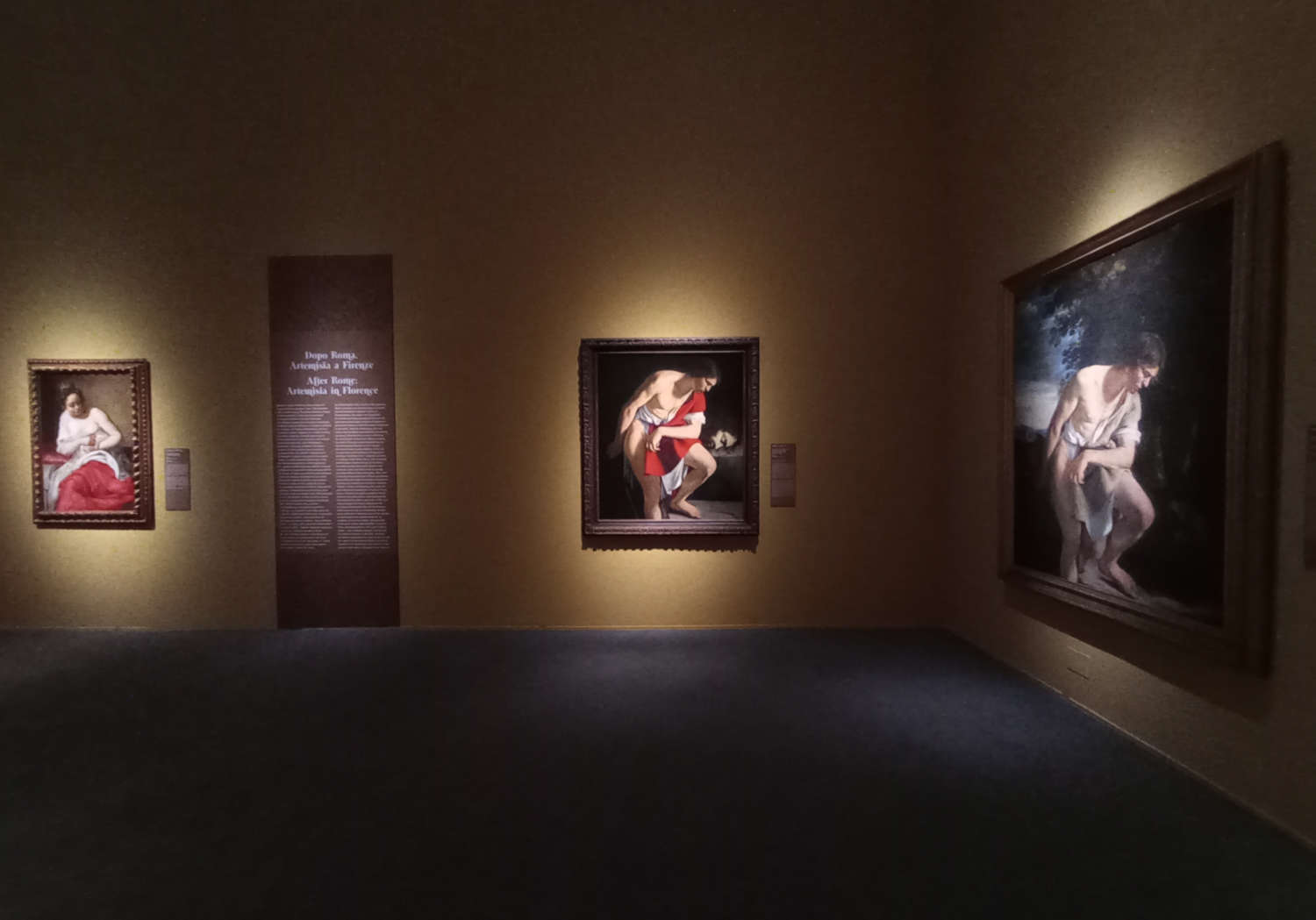 Arrangements of the exhibition Artemisia Gentileschi:
Arrangements of the exhibition Artemisia Gentileschi: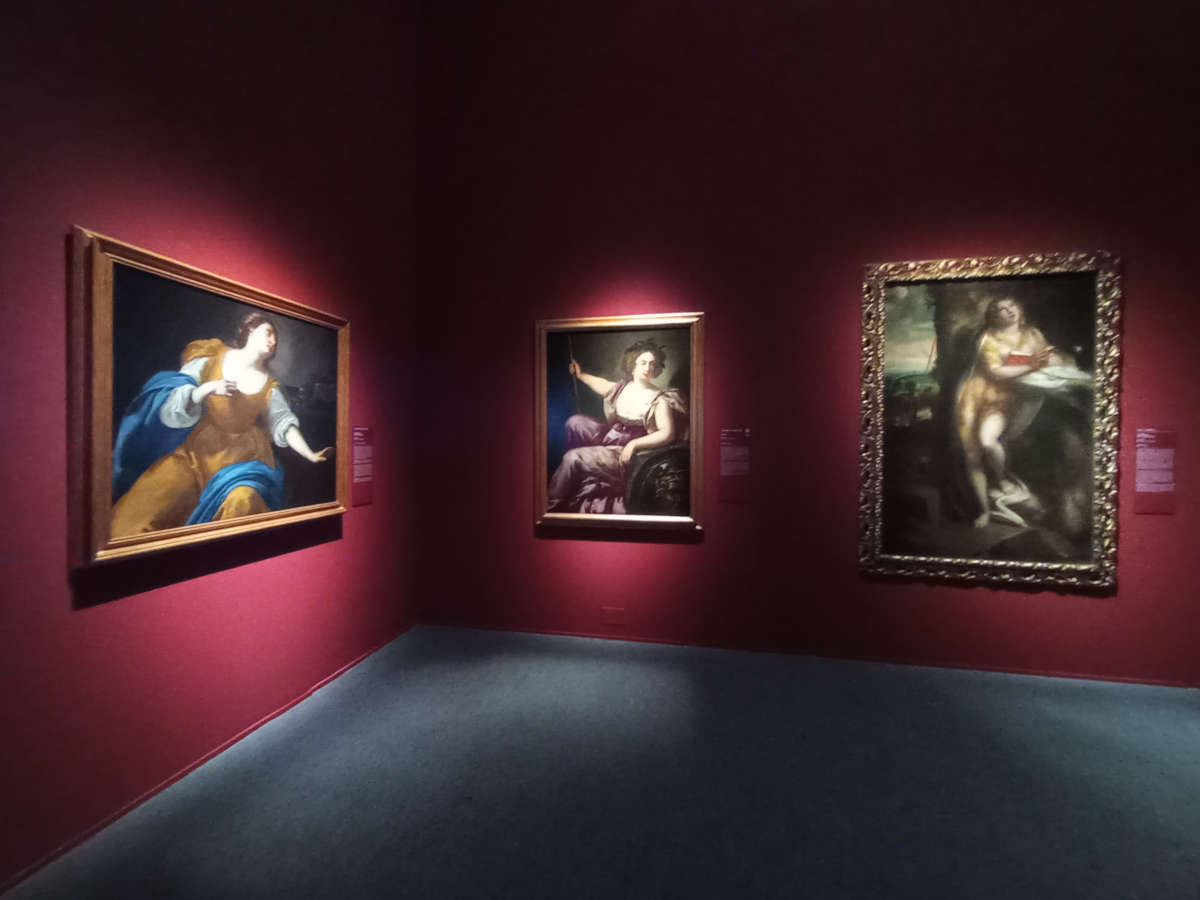 Arrangements of the exhibition Artemisia Gentileschi:
Arrangements of the exhibition Artemisia Gentileschi: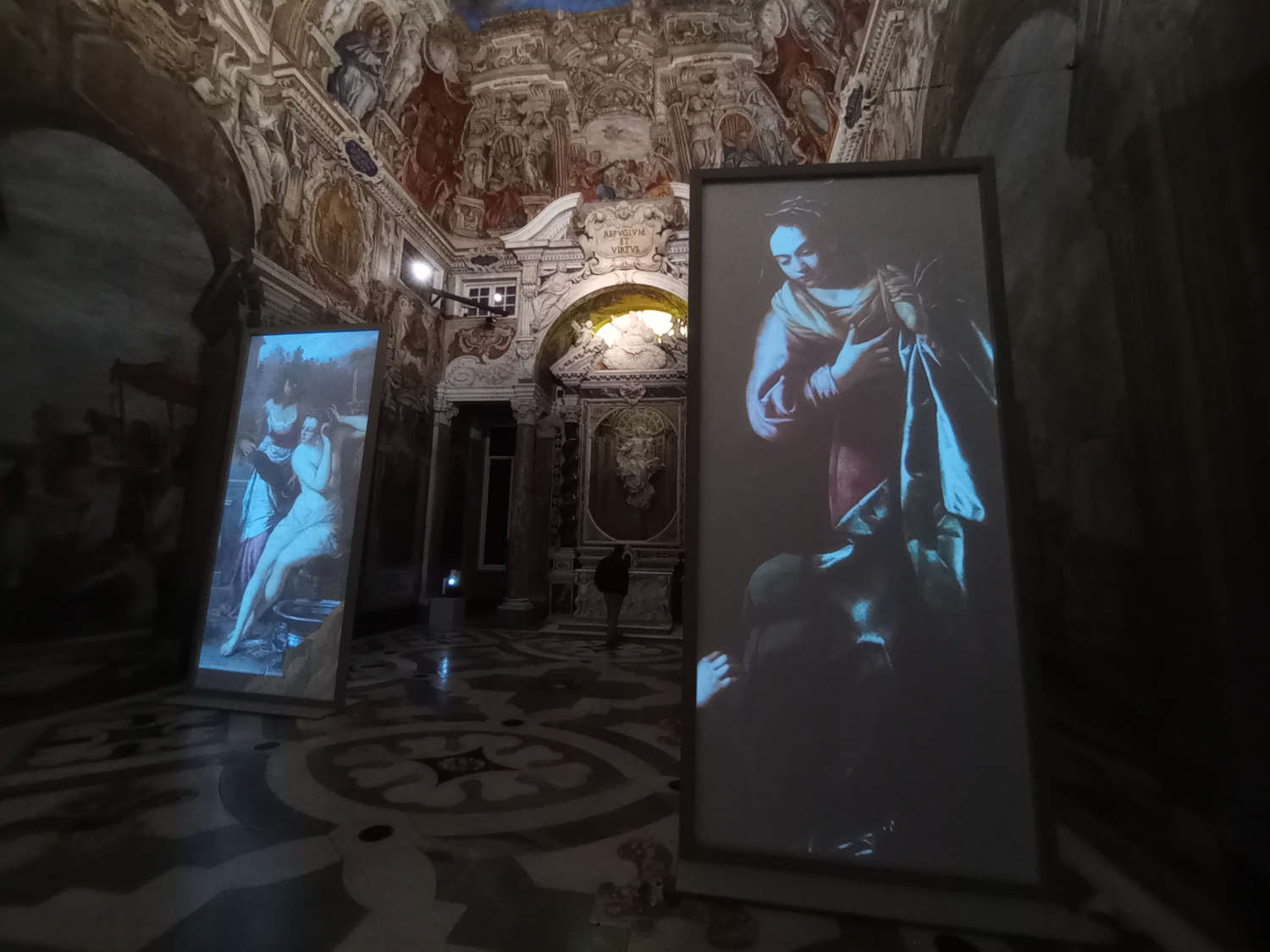 Arrangements of the exhibition Artemisia Gentileschi:
Arrangements of the exhibition Artemisia Gentileschi:The opening of the exhibition already proposes a romanticized reading, we might say, of Artemisia’s career, establishing a comparison between Pommersfelden’s Susanna and the Old Men and its counterpart painting at the Moravská Galerie in Brno to suggest to the visitor that “the beginning and the end” of Artemisia’s artistic journey are “marked by a woman who suffers violence, has to defend herself against an infamous accusation, and finds herself alone to fight against men. An extraordinary coincidence, a metaphor for Artemisia’s entire life.” A forced coincidence, one might rather call it, first of all because in the production of almost all seventeenth-century artists figures the presence of paintings that have biblical heroines as their subject, and then because it is surely an exaggeration to want to sanction a permanent correlation between Artemisia’s biographical story and her paintings, as if throughout her life the ’artist had worked only as a function of the sad episode of 1611 (it is true that this is not then openly stated in the exhibition, but such a comparison at the opening of the exhibition, and accompanied by phrasing such as that above, leads the public to believe that Artemisia’s entire artistic parabola was a kind of continuous memory of violence). “Artemisia Gentileschi’s name,” wrote Judith Mann in 2013, “now evokes a dramatic art, populated with direct and uncompromising visualizations of strong women integrally connected to the events of her life. This characterization describes perhaps less than a quarter of his known paintings, yet it persists.” Or, at least, we might say it persists at certain mainstream cultural products, or at certain blockbuster exhibitions. As for the Susanna of Pommersfelden, then, the exhibition tends to downplay Gentileschi senior’s intervention: in the room panels it is presented as a work made “under the supervision of her father Orazio,” and it is claimed that the discovery, in 1839, of his daughter’s signature would have dispelled “any doubt about the attribution to Artemisia.” In reality this is a picture that is far from resolved, and long is the list of scholars who have hypothesized a more or less extensive intervention by Orazio Gentileschi (Bissell, Contini, Garrard, Christiansen, Greer, Mann and others, and even Claudio Strinati in his fine essay in the catalog, where he states that it is reasonable to think “that Orazio guided her hand in this and other coeval circumstances.”) her father, after all, had every interest in presenting his very young daughter, then 17 years old, as an artist of extraordinary talent. I think we can agree with Pierluigi Carofano, who, in the proceedings of the Giornate di studi sul caravaggismo e il naturalismo nella Toscana del Seicento (2009), writes that “it is really difficult to think that a painting of such quality is the product of an artist who is still an adolescent, however gifted.” the work is thus a cornerstone for the reconstruction of Artemisia’s artistic journey, given that it is her first dated painting, but it is necessary to go back to thinking of it as a painting partly executed, and perhaps even conceived, by Orazio Gentileschi.
The second room is a roundup of portraits of women artists who worked between the 16th and 18th centuries, which is superfluous and meaningless: first, because one does not understand the reason for widening the gaze to other women artists, and moreover over a space of three centuries, in a monograph on Artemisia Gentileschi; second, because the selection is in any case reductive with respect to a subject that is too complex to be exhausted in a’single room; third, because if the goal is to present to the public “the talent of women between the 1500s and the 1700s,” as the title of the section states, then it becomes ridiculous and even a little embarrassing to offer the public portraits of women artists painted .... by males! This is the case with the portrait of Lavinia Fontana painted by Pietro Bacchi da Bagnara, that of Angelica Kauffmann executed by Francesco Manno, that of Marta Rosa done by Francesco Rosa, and that of Giovanna Garzoni by Carlo Maratta (in short, almost all the portraits in the room, excluding the self-portraits of Sofonisba Anguissola and Artemisia Gentileschi). Then follows another sketchy section, which would like to account for Artemisia’s apprenticeship at her father’s workshop, but in the room are gathered all works datable to when the young woman had not only already left Rome and her father’s house, but was already married and with three children (so much so that, for example, Horace’s Portrait of a Young Woman as a Sibylline , at the 2017 exhibition on Artemisia, the one at Palazzo Braschi in Rome, was displayed in the section on the painter’s second Roman period and certainly not in the chapter on her beginnings). Artemisia is featured here with an extremely debated work on whose autography there is still no unanimous agreement (the Madonna and Child from the Pitti Palace, formerly assigned to Giovanni Francesco Guerrieri, although an even older attribution to Artemisia has recently been reaffirmed, but without finding total consensus) and with an Allegory of Sculpture that appeared on the market in 2022 as attributed to Francesco Cairo, then later assigned to Artemisia by Riccardo Lattuada and Francesca Baldassari, independently of each other, and sold at auction this summer for nearly two million pounds. It is, however, dated to a period between the Florentine sojourn and the later one in Rome-a work that, like the others, therefore has nothing to do with Artemisia’s training in Orazio’s workshop. Therefore, in the section that is supposed to recount the painter’s debut, the audience is left with a work of debated autography and a mature work. The father is present with a rather well-known work, the Saint Cecilia and the Angel from the Galleria Nazionale dell’Umbria: it is suggested to the audience that, according to some unspecified hypothesis, the saint could be a portrait of Artemisia as a child (a really curious idea and not supported by any serious evidence, so much so that in the catalog card compiled by Carla Scagliosi, rightly, it is not even mentioned). The idea that Artemisia’s face is present in the works, either because the painter self-portrayed herself or because someone else portrayed her, is omnipresent from beginning to end and is proposed for most of the works on display: it is pointless even to comment further. In the next room, where a video is shown that traces the history of the fresco decoration of the Casino delle Muse (in which Orazio Gentileschi and Agostino Tassi participated), we even go so far as to propose to the audience the fanciful hypothesis that Orazio painted his daughter’s portrait on the walls of the Casino in order to induce Tassi to marry her and thus repair, in accordance with the mentality of the time for which a rape was more a damage to honor than to the physical person, the violence to which he had forced her (it will be necessary to point out that in Claudio Strinati’s essay, in which the portrait of Artemisia in the frescoes of the Casino delle Muse is also discussed, there is not the slightest mention of this hypothesis).
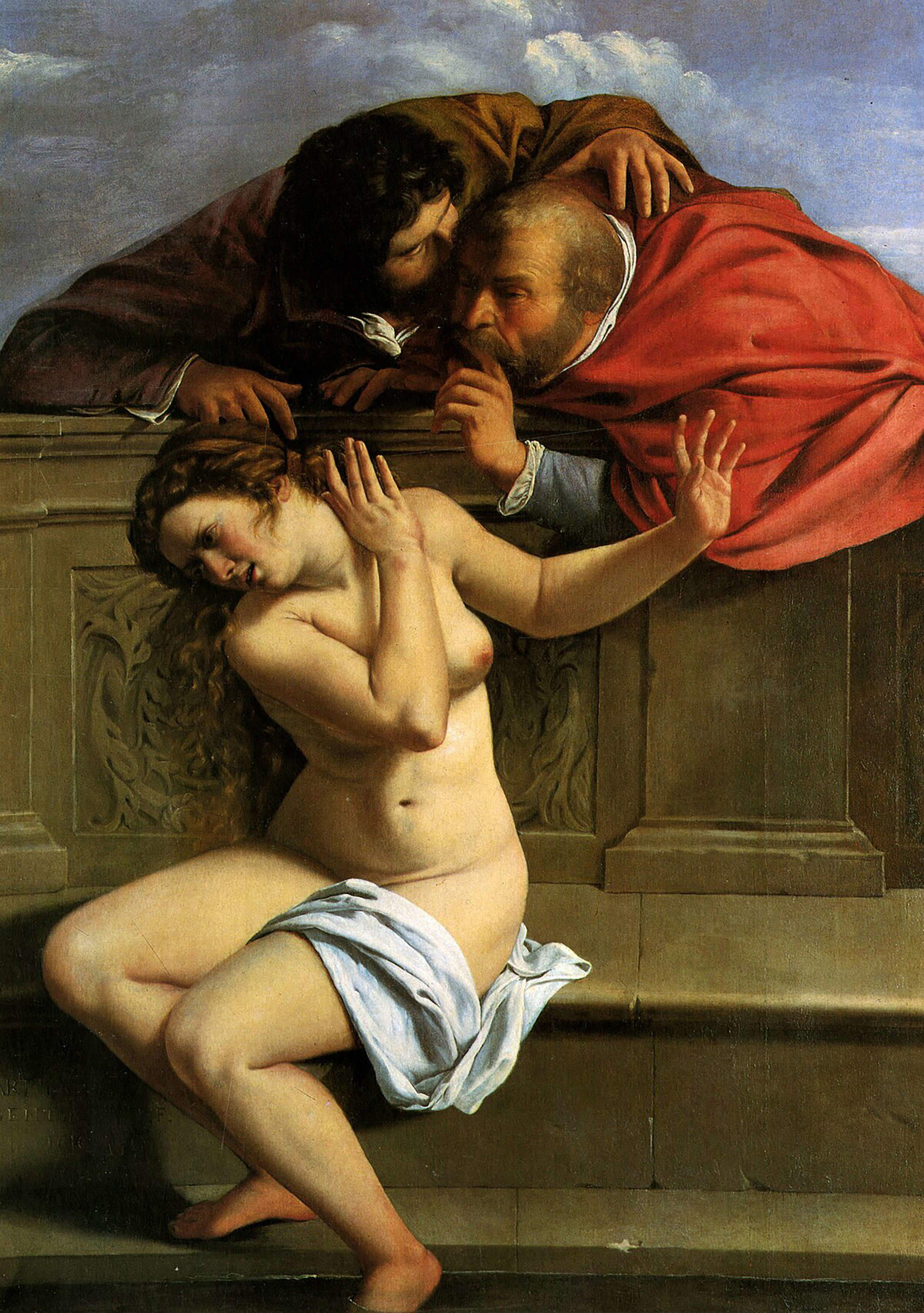
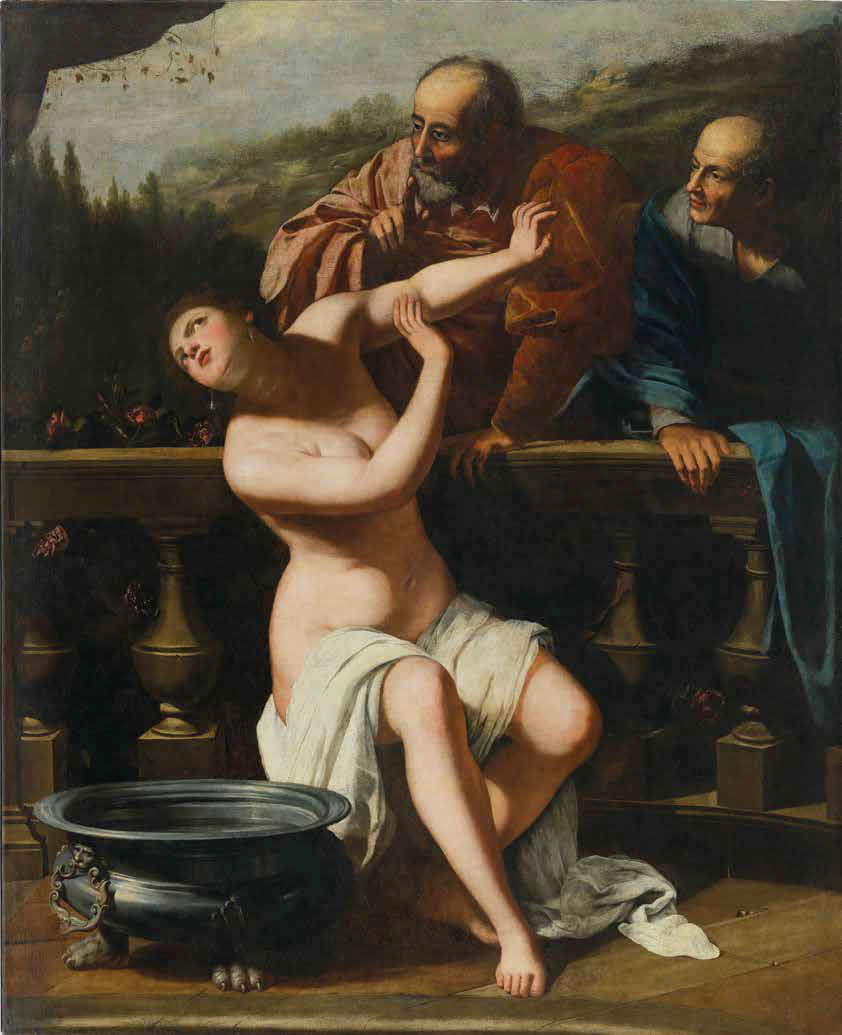
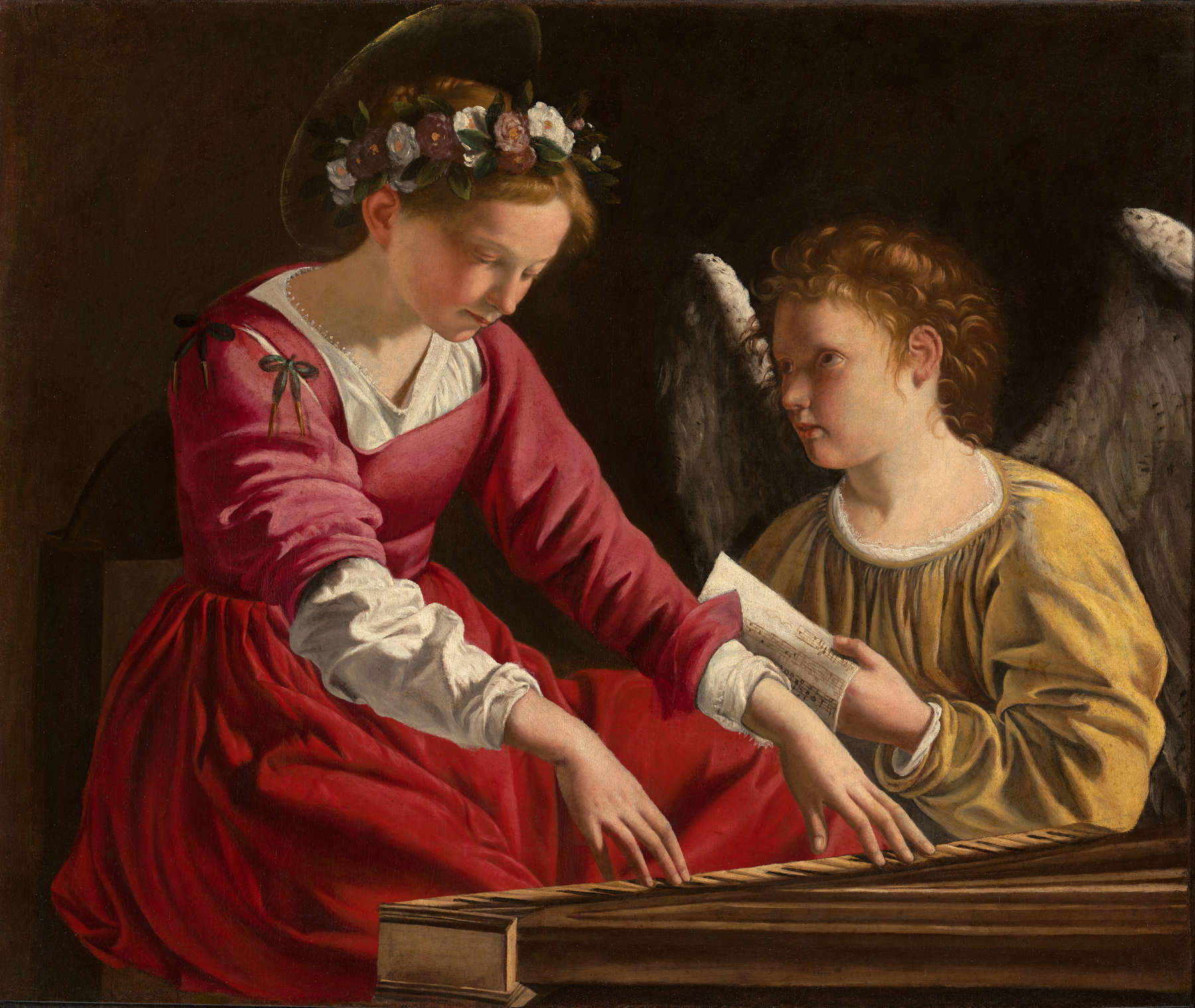
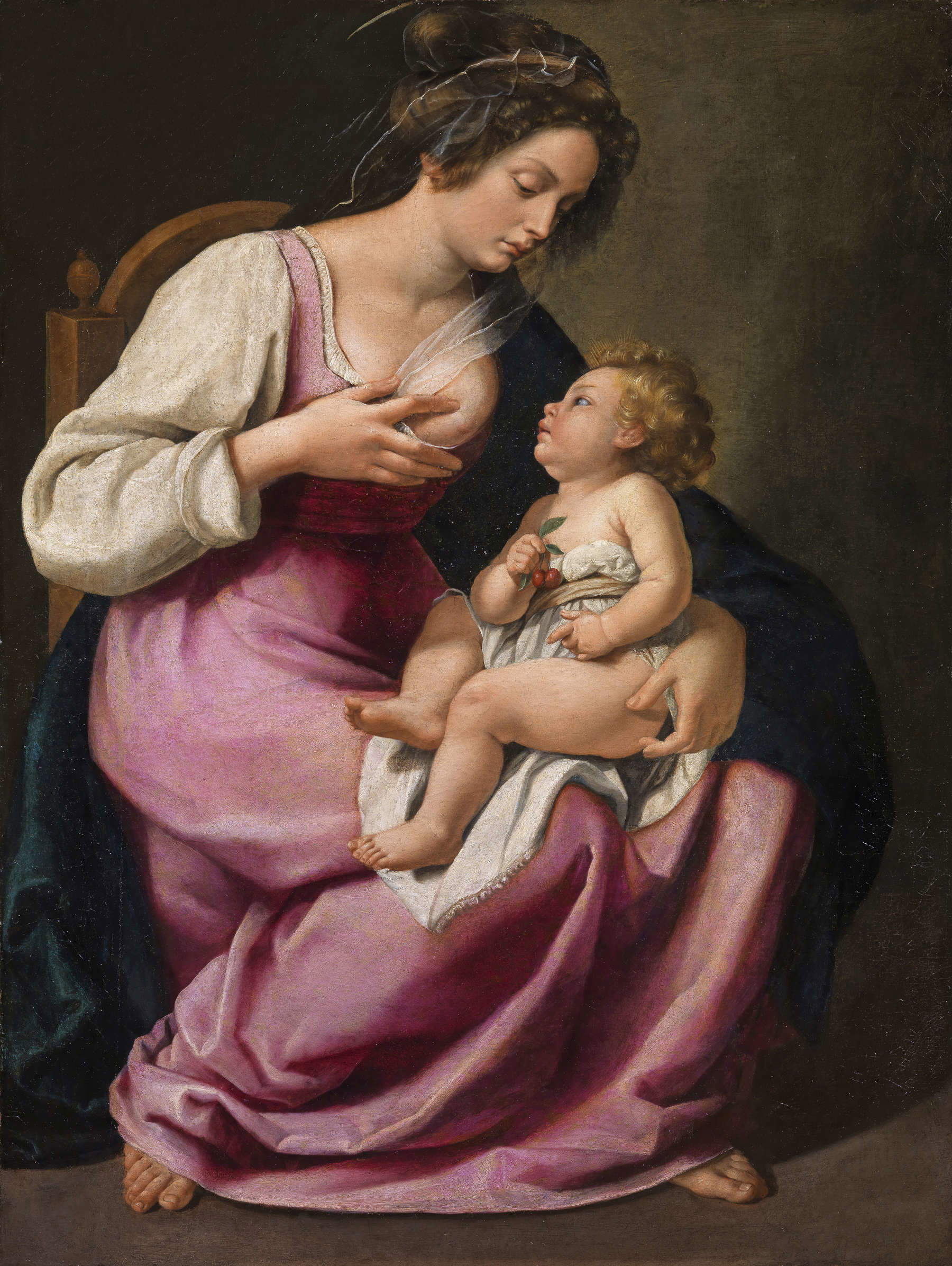
We then enter a rather confusing room in which three marines by Agostino Tassi are displayed, present not so much for art-historical reasons as, if anything, to give “proof of his exceptional talent” (so in the room panel), alongside some “threatened women” of Artemisia in order to shift the exhibition’s narrative yet again to the plane of the protagonist’s personal vicissitudes (the Uffizi’s Bathsheba , the Ducrot Collection’s Death of Cleopatra , and a Paolo and Francesca recently attributed to Artemisia thus play a rather instrumental role, not least because they are works chronologically located far removed from the rape affair). Personal vicissitudes that are made spectacular in the installation in the next room: a room with, in the center, an unmade bed, rivulets of blood on the walls, and a female voice interpreting the rape testimony given by Artemisia during the trial against Agostino Tassi. It is a moment of trash with voyeur overtones that should have nothing to do with a serious exhibition capable of treating its visitors as adults, and which, moreover, would seem to imitate a homologous set design that Emma Dante had set up in the itinerary of the exhibition on Artemisia that was held between 2011 and 2012 in Milan, at the Palazzo Reale: at the time, the installation did not arouse the indignation raised today by the one at Palazzo Ducale, but that was no reason to repeat the experiment more than a decade later, because if the focus of an exhibition on Artemisia Gentileschi should be painting, the transformation of her shocking biographical vicissitudes into an inappropriate show stands in the opposite way to the objectives of an exhibition that wants to be balanced and respectful of the painter.
However, the fictionalized reconstruction of Artemisia’s story continues in the next room, the description of which belies the title (“The Revenge of Artemisia”), since the room apparatuses state that “those who claim that Artemisia painted the scene in which Judith decapitates Holofernes several times in her career because she wanted to take revenge in this way for the violence suffered by Agostino Tassi, do not give sufficient credit to her talent and greatness.” the room displays a number of paintings that have Judith and Holofernes as their subject to demonstrate, the panels inform us, that “in Artemisia’s gaze, Judith is more decisive and proud than how she was painted by other great painters of the time.” And to demonstrate this, the curator has brought together here the Lemme collection’s Judith , a much-discussed work of uncertain authorship (and in the case it would still be an early work, to be placed around 1610 if not earlier), and where the biblical heroine “shows without any excitement the macabre booty” (so Maria Cristina Terzaghi in the 2017 exhibition catalog, where the work was proposed as a collaboration between father and daughter), and then again the Judith of Capodimonte, a variant of lower quality inferior to its Detroit painting counterpart (so much so that some have questioned the authorship), and a work in which the artist, “compared to the violence of the previous versions [...] changes register and prefers the narrative of the pathos following the killing of the Assyrian general” with a candlelight scene that “echoes a fashion that spread in those years” (Terzaghi again, in the catalog of last year’s Artemisia exhibition), and finally a... replica of his father Orazio’s famous Judith now in Hartford (Italian audiences saw the original last year at the exhibition Caravaggio and Artemisia. The Challenge of Judith held at Palazzo Barberini). The replica in question, first exhibited a year ago by Pierluigi Carofano at the Fondazione Cassa di Risparmio di Terni e Narni’s exhibition Drama and Passion , is displayed alongside another replica of the Hartford painting, the one housed in the Pinacoteca Vaticana, a work about which critics have expressed different views, although most consider it to be the work of a workshop (in the exhibition it is presented as an autograph by Horace), while only Mary Garrard in the past considered it to be the work of Artemisia (an idea that has not been followed up). The Hartford original (which, moreover, also has an early collecting history related to Genoa) is missing from the exhibition, so the comparison is between the work assigned to Artemisia and the workshop replica.
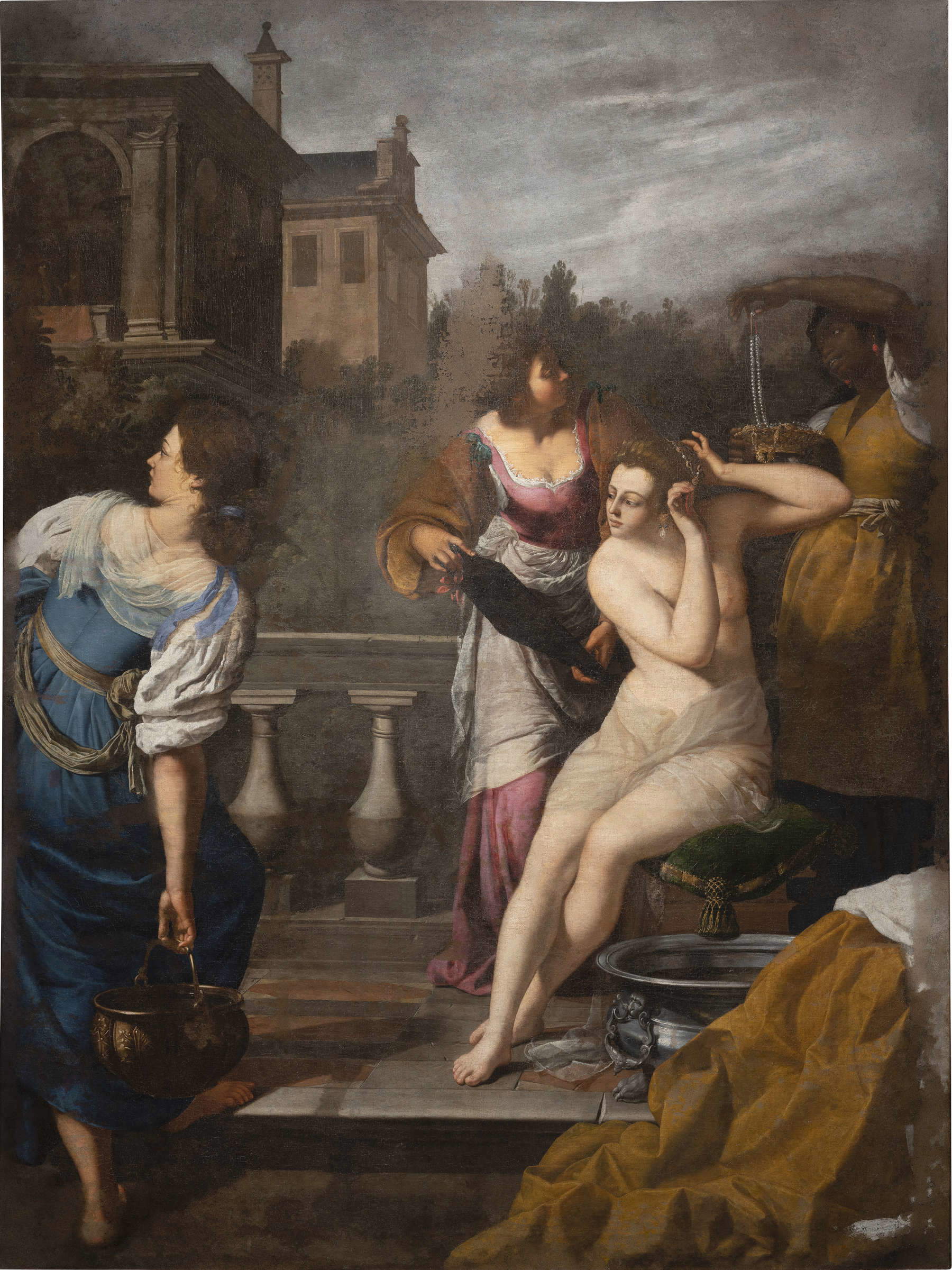
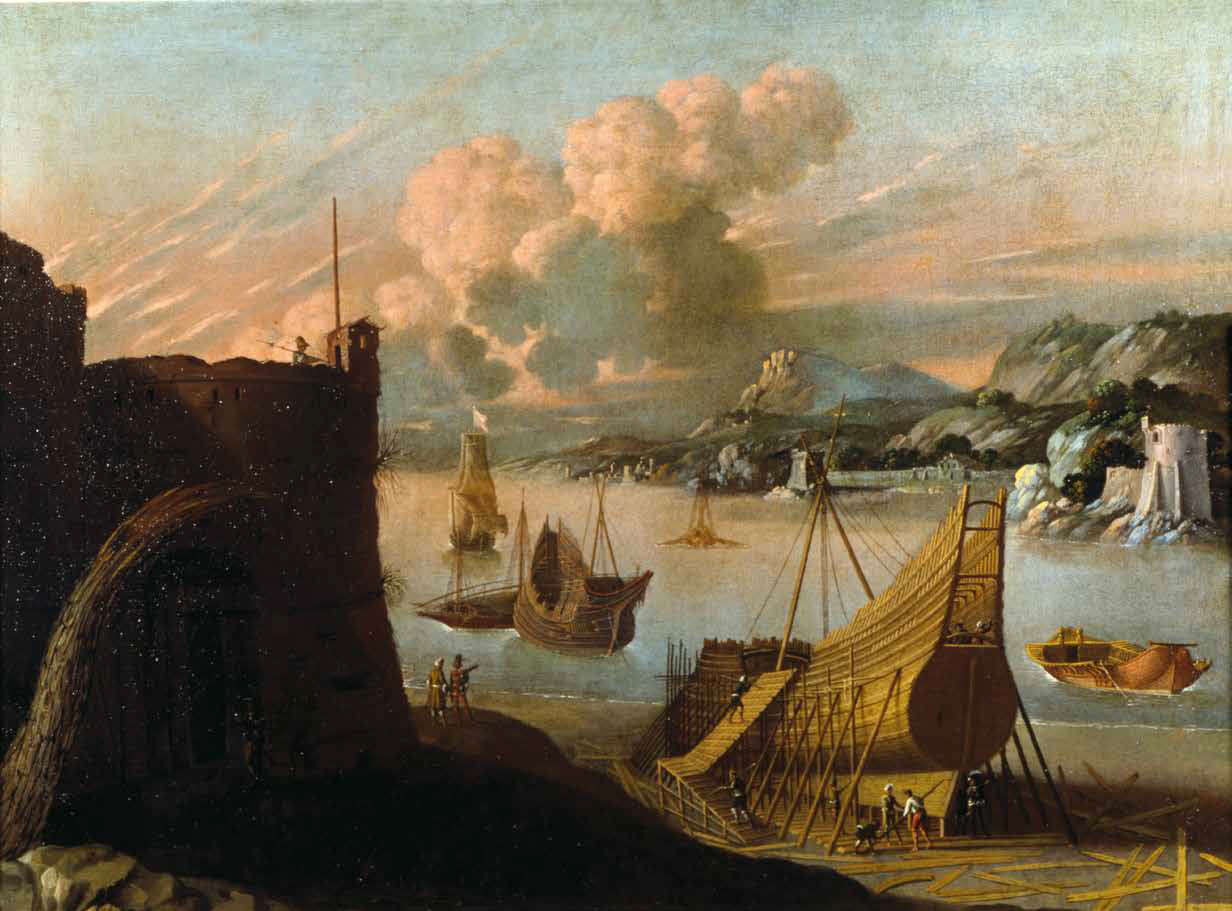
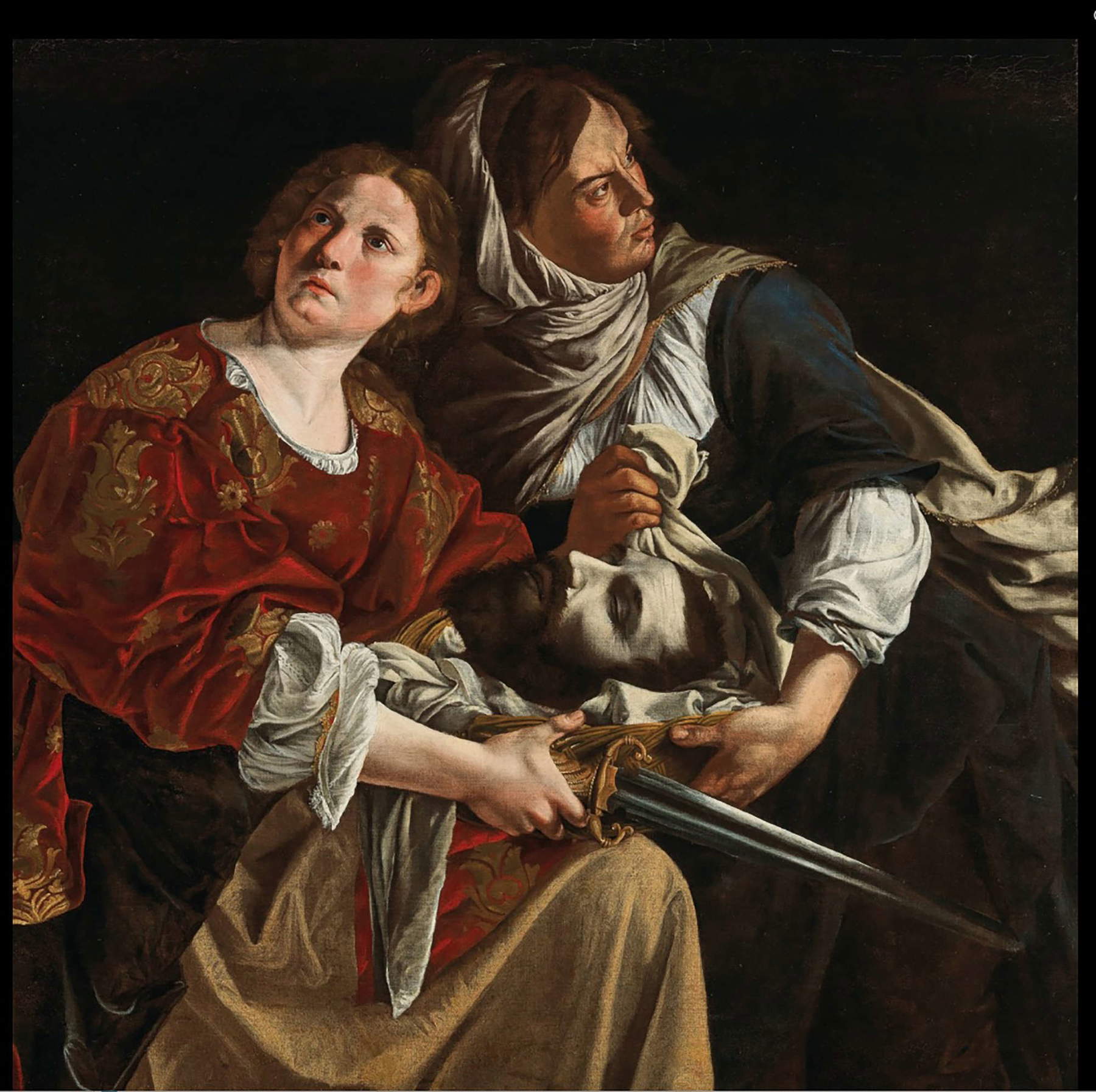
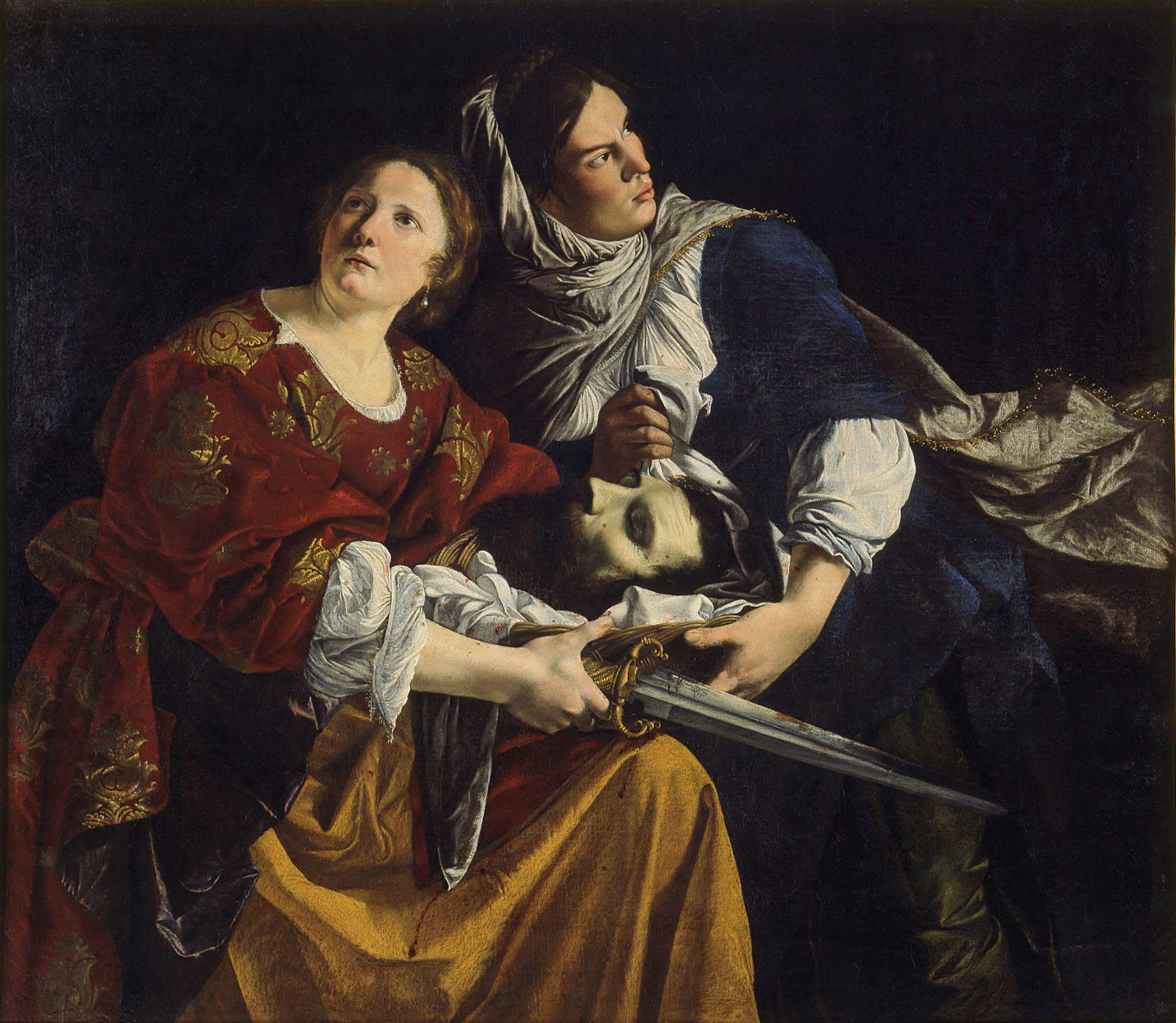
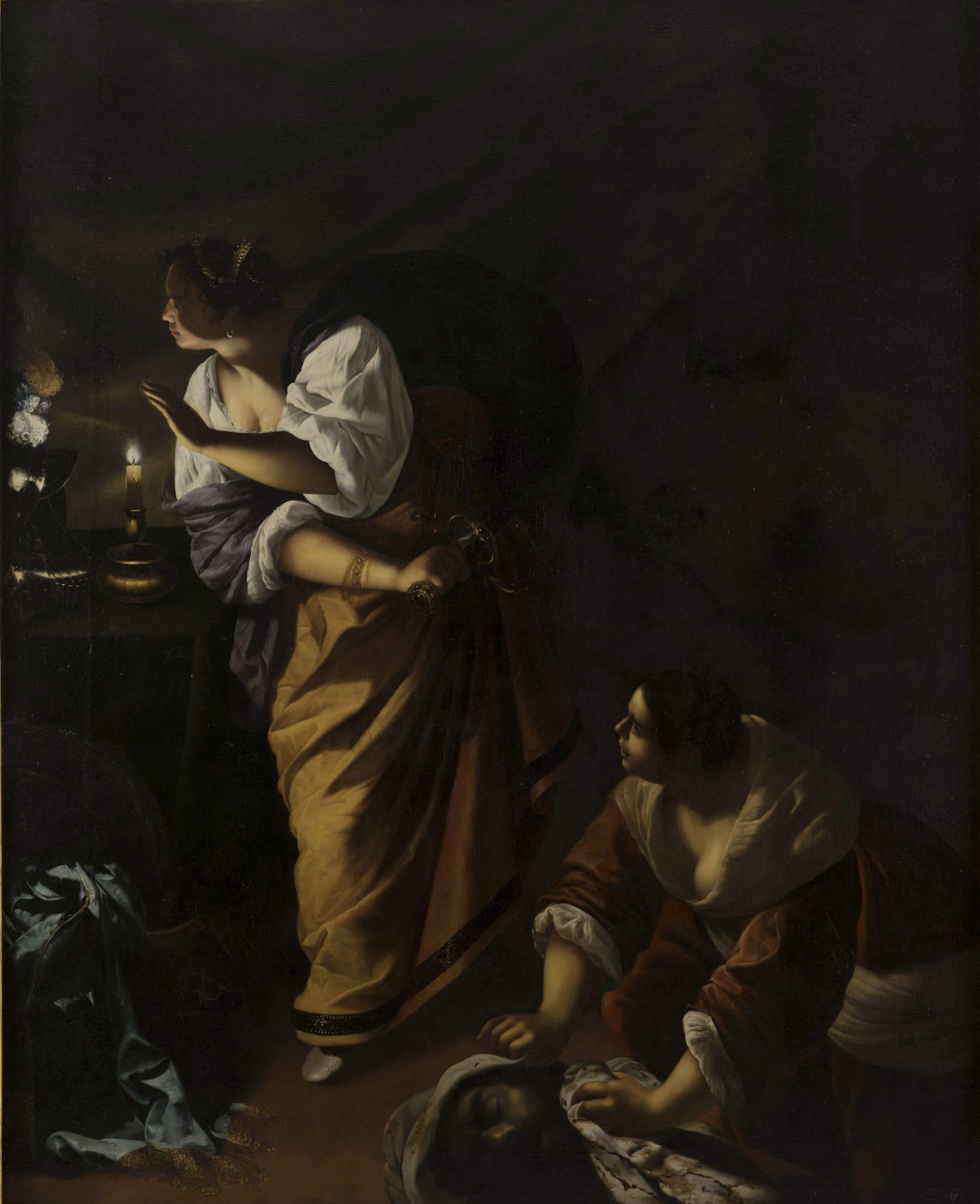
The next two sections, the one on the Genoese Caravaggesques and the one entitled “Orazio Gentileschi and Criminal Rome” (!) seem like mere fillers, given the skimpy selections, insufficient to provide a comprehensive representation of the topics addressed, although, paradoxically, they appear as the two most coherent chapters of the review: the part on Horace, in particular, focuses on the developments of his art in the early part of the seventeenth century, thanks in part to the presence of three important loans (the San Francesco from the Prado, the San Girolamo from Turin and the David from the Galleria Spada in Rome, two cornerstones of Horace’s career, useful for realizing his relations with theart of Caravaggio) that allow the public to get an idea of how the artist must have worked at the time when Artemisia was beginning to learn her first rudiments in her father’s workshop (the public is thus forced to go back in time). After this flash, however, the exhibition returns to juggle its difficulties: the section on Artemisia’s Florentine period, which follows the one devoted to Horace, presents the public with only three works, only one of which is referable to her stay in Florence (the Cleopatra from a private collection, shown for the first time at the 2017 exhibition, which may have been painted in Florence, or immediately after the painter left the grand ducal city, while the other Cleopatra is a painting from her Neapolitan years, and the Portrait of a Lady with Fan, from the Genoese collection of the House of Balbi, because of its similarities to the Portrait of a Gentleman in the Palazzo d’Accursio in Bologna, can be referred to the mid-1920s: moreover, it has been desired in the past to see in it a self-portrait of Artemisia, a possibility also suggested by the Genoese exhibition, but which can be safely ruled out on account of the clothing, which testifies to a wealth and status far removed from that of the painter).
The last sections of the exhibition do not deviate much from what the public has seen up to this point: the setting is still centered on Artemisia’s “heroines” (it has already been mentioned that there is no correlation between the subjects of her paintings and the painter’s lived experience, plus here the exhibition even goes so far as to claim that the commonality between all the women painted by Artemisia presented in the room lies in the fact that “they are almost all her self-portrait”!), with a room where theAurora from the Masu Collection, the Minerva from the Uffizi and the Magdalene from the Sursock collection in Beirut appear, which the Italian public thus has the opportunity to see again two years after it was shown at the exhibition The Ladies of Art at the Palazzo Reale in Milan, where the work was presented with the damage it suffered during the explosion in the port of the Lebanese capital in 2020, while now it can be admired restored. Next to it, while it may make a modicum of sense to display Simon Vouet’s Lucretia (it is, however, a work from the 1720s), Luca Cambiaso’s Magdalene appears completely out of context. It then continues with a thematic lunge on the story of Samson and Delilah, which includes an unpublished, a painting assigned on thisoccasion to Artemisia by Riccardo Lattuada of which at least one replica is known, passed at auction by Cambi in 2013, and a controversial canvas from a private collection, formerly assigned to Domenico Fiasella as well by an expert on Artemisia such as Roberto Contini, then to Giuseppe Vermiglio by several scholars, and attributed instead to Artemisia again by Lattuada, precisely on the occasion of the Genoese exhibition. The last room, which is supposed to focus on the last phase of Artemisia’s career, the Neapolitan period, presents only one work, albeit an important one, namely theAnnunciation from the Capodimonte Museum, Artemisia’s first certain Neapolitan work, dated 1630, and a painting for which the two Orazio Annunciations executed during her Genoese sojourn are inescapable: one of them is still in the city, in the basilica of San Siro. The possibility of a real lunge on the Neapolitan Artemisia is missing, since all the works datable to the last years brought to the Ducal Palace have been scattered in the various sections on “heroines.” on the other hand, the sequence of stereotypes about Artemisia’s women continues to the end, so much so that for the CapodimonteAnnunciation the panel goes so far as to claim that here, too, the artist “devotes herself to exalting the greatness of a woman” (!).
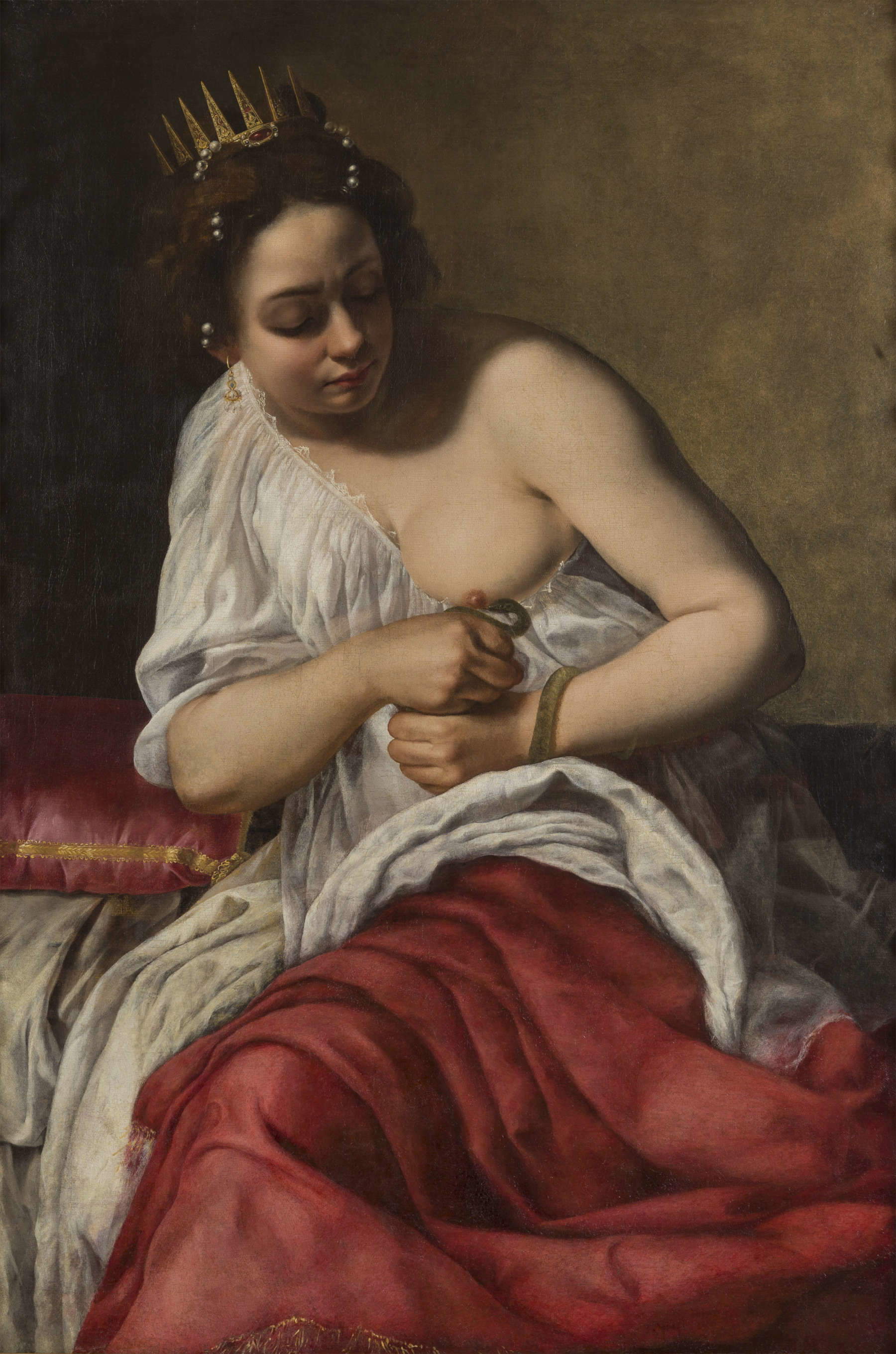
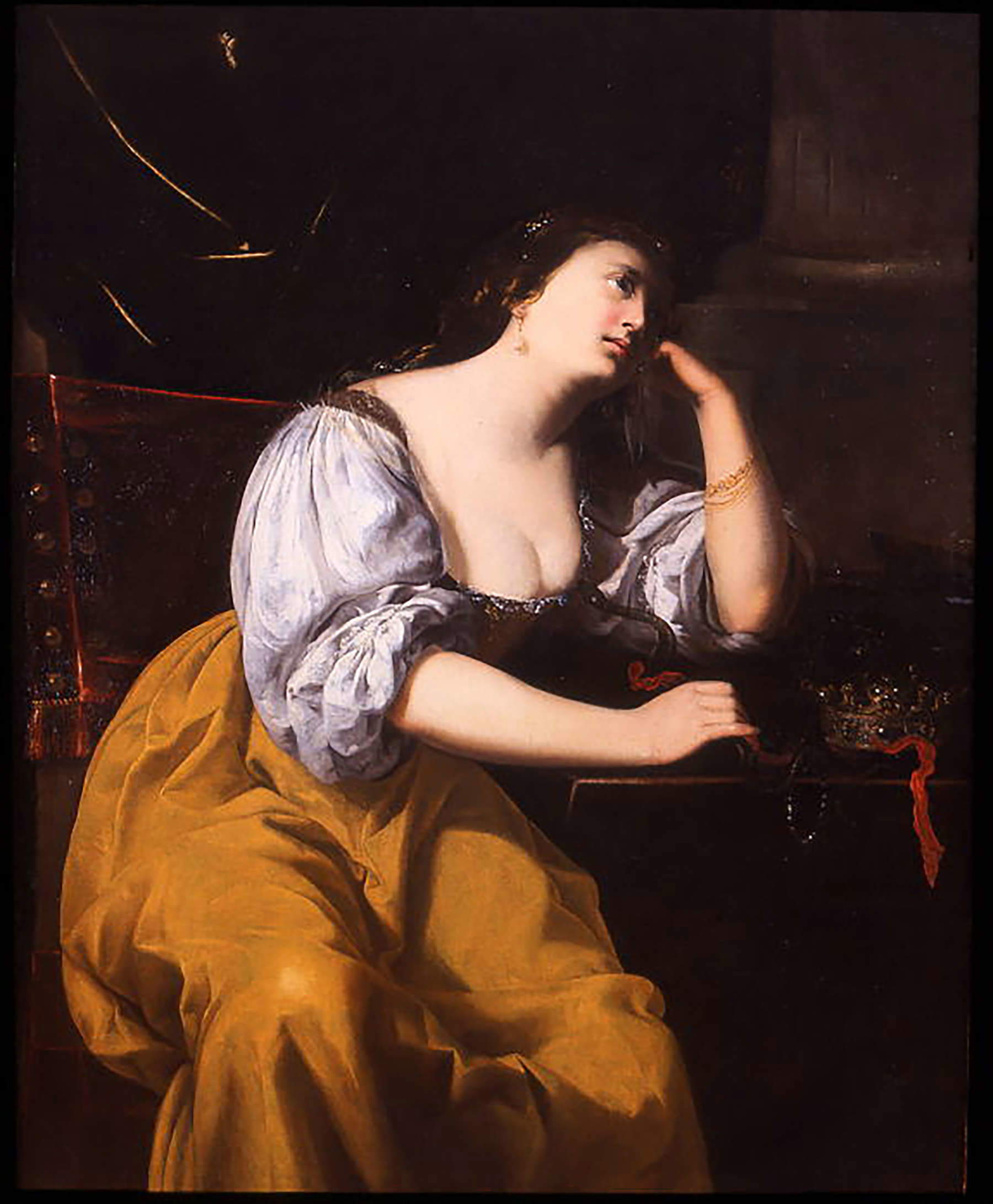
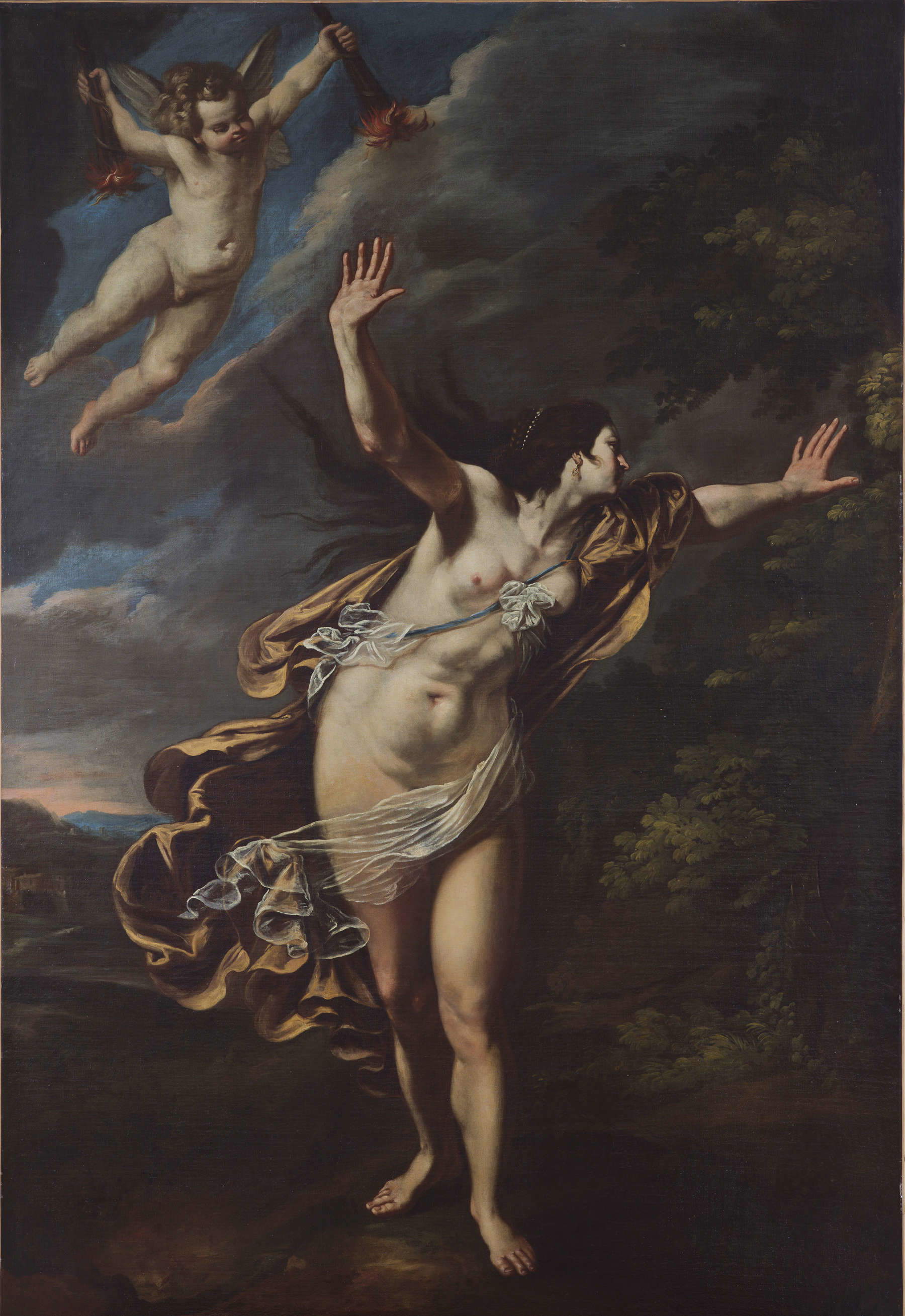
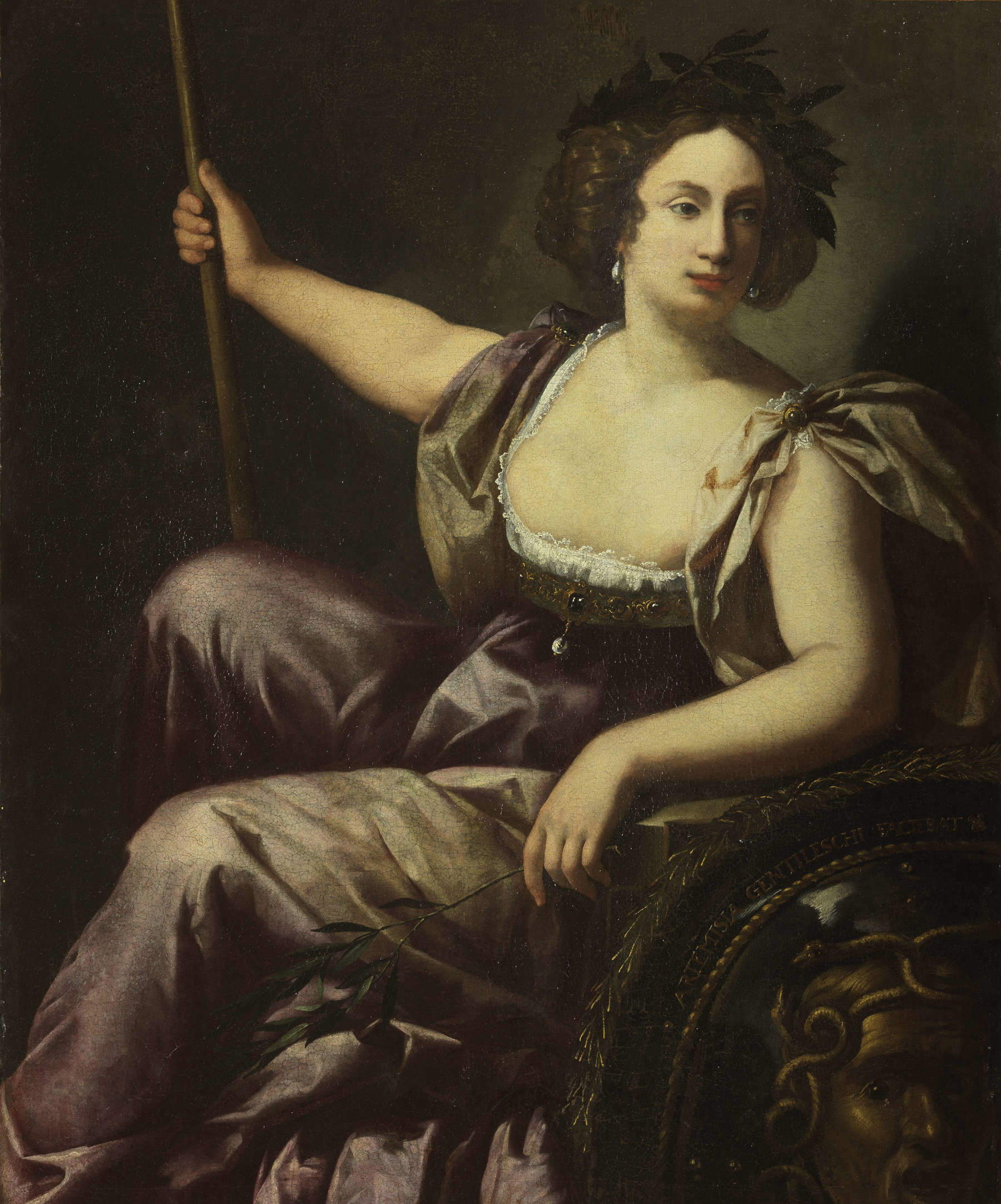
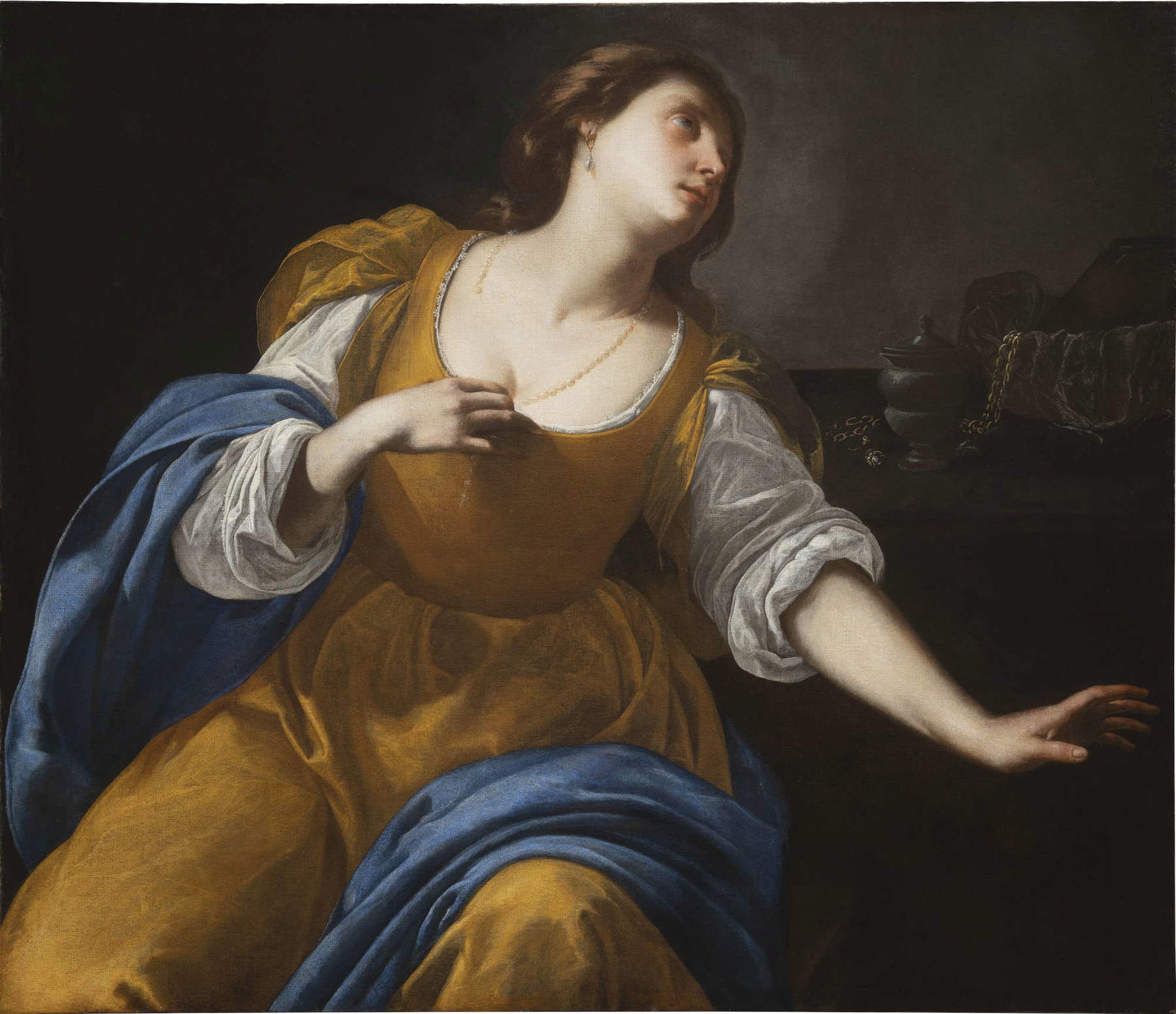
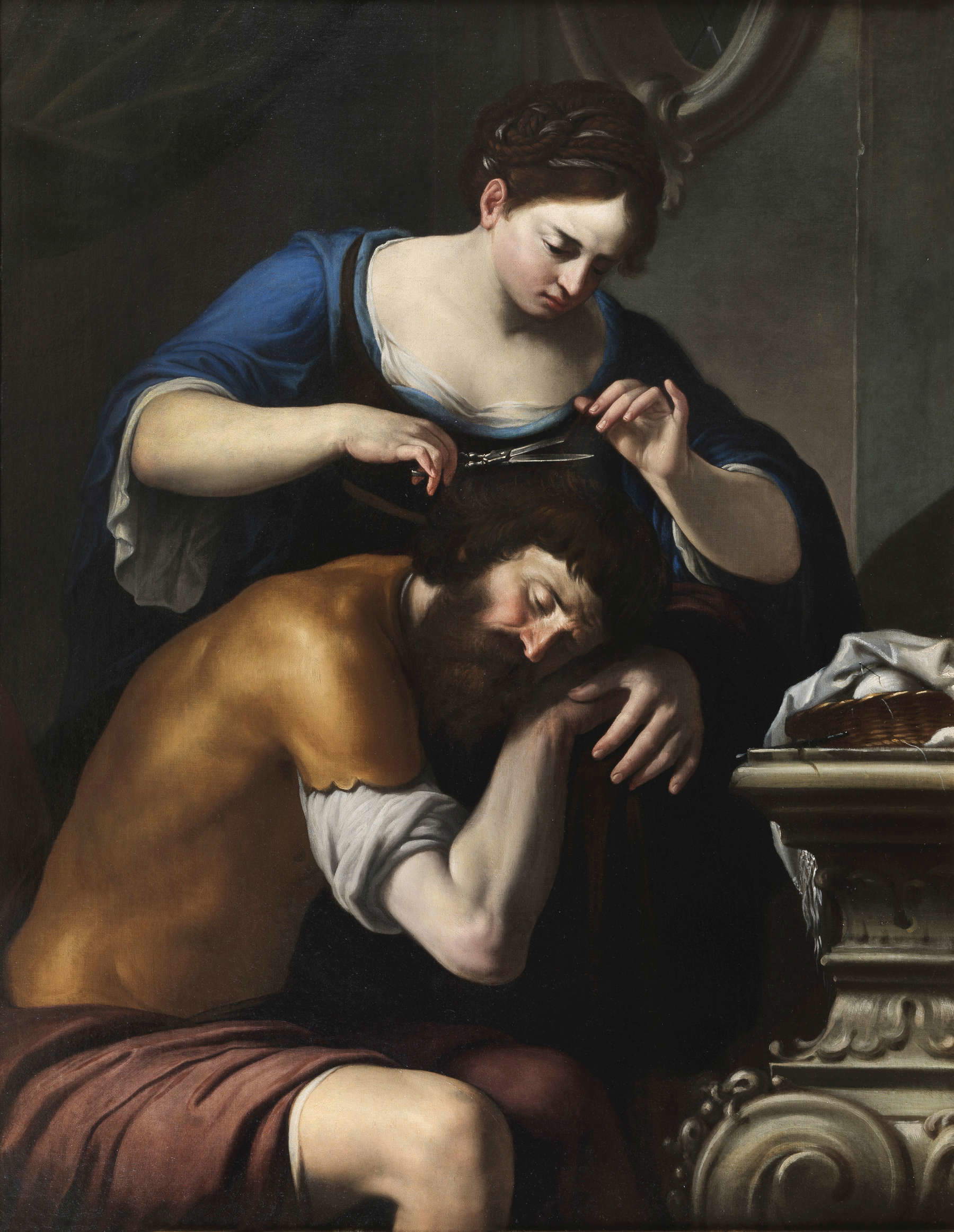 Artemisia
Artemisia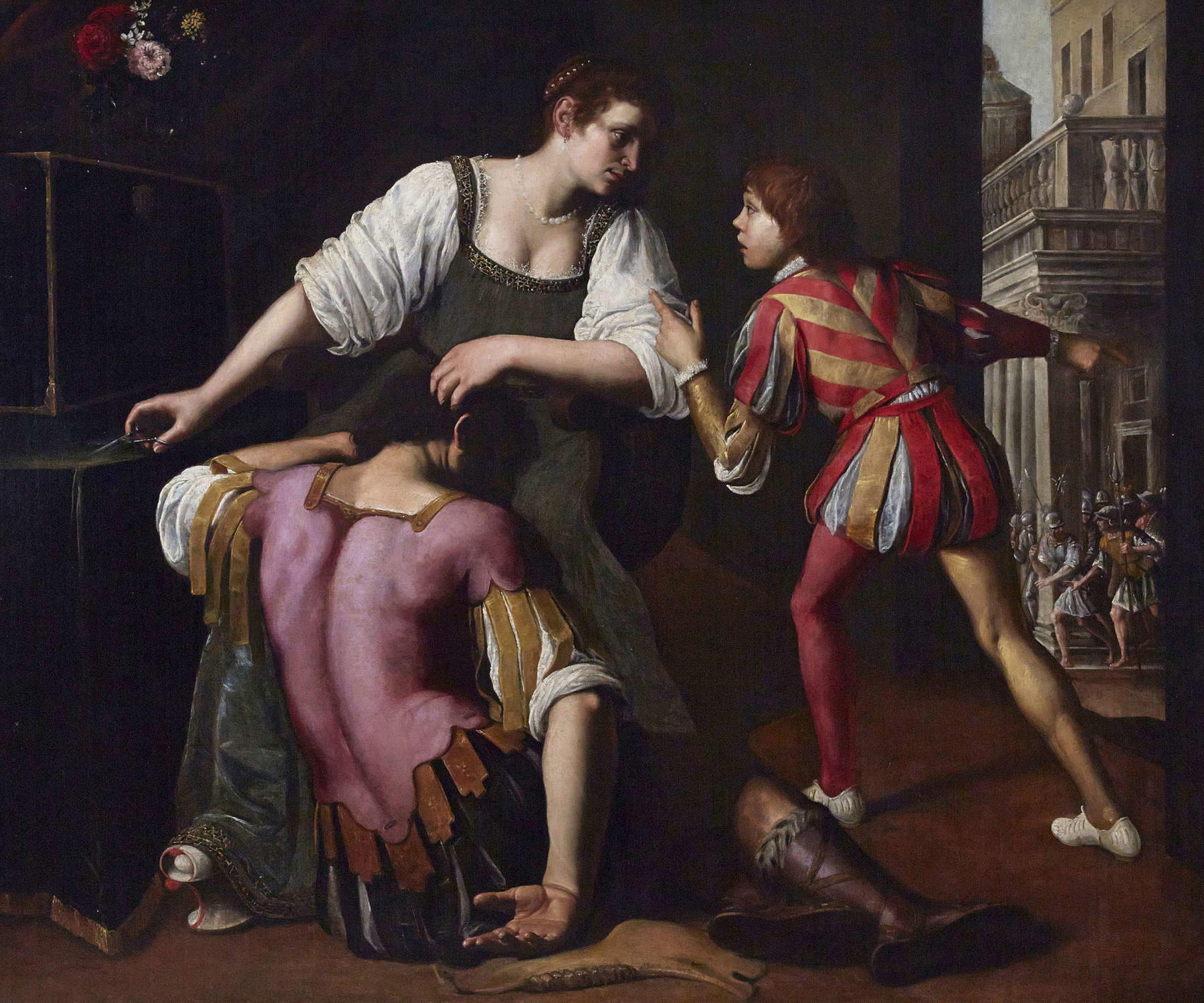
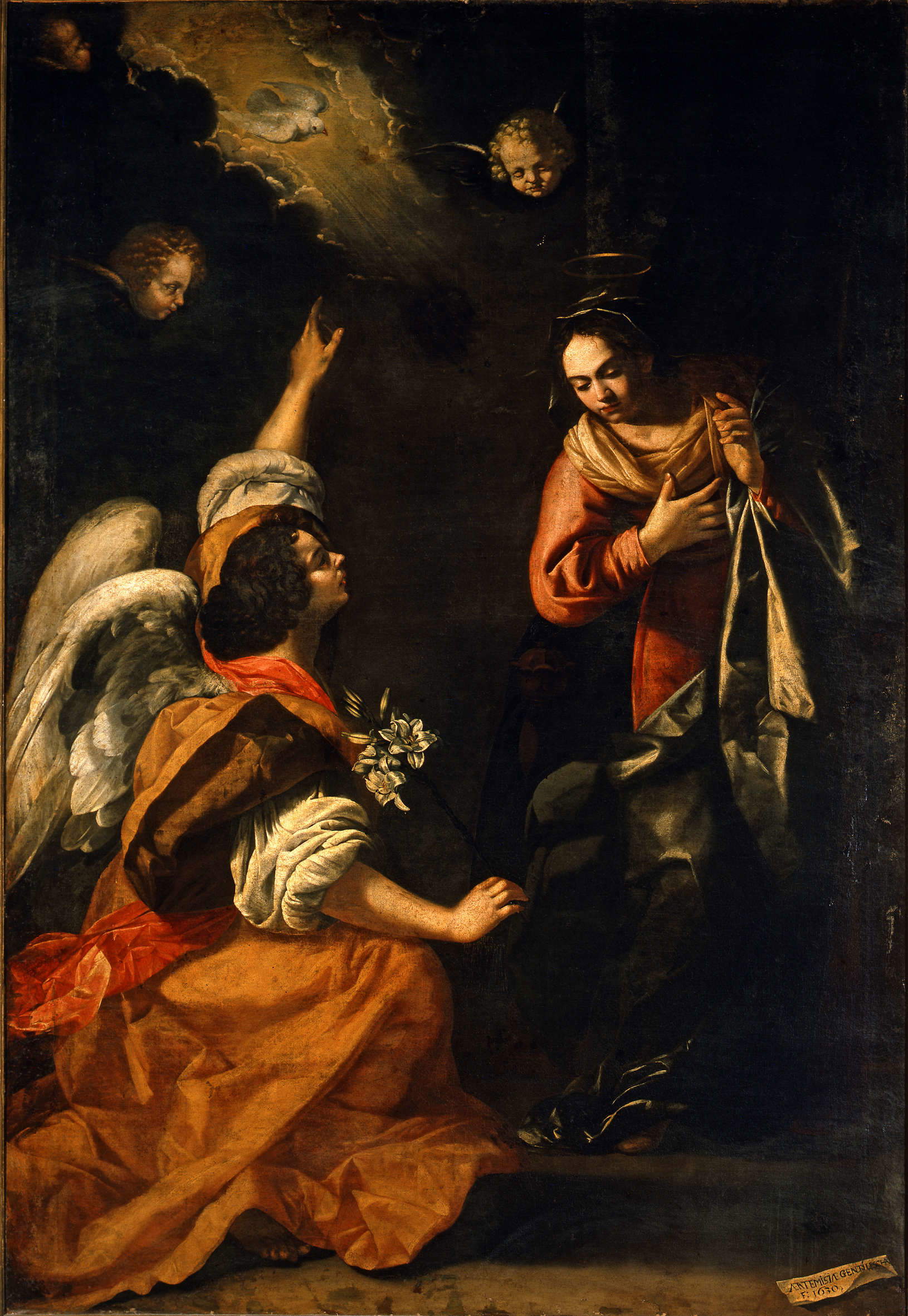
In concluding the itinerary, the curator decided to carefully avoid one of the most sensible things he could have done, which was to leave in peace the frescoes of the Doge’s Chapel, too often plagued in past exhibitions by arrangements that get in the way of a proper view of the scenes that decorate the Doge’s Palace’s most intact and spectacular environment: thus, those who hoped to be refreshed by viewing the paintings of Giovanni Battista Carlone have to deal with two useless mega-screens set up right in the center of the chapel, which serve to project the blow-ups of the works on display in the visitor’s itinerary (!) and of other works not in Costantino D’Orazio’s exhibition instead. Thus ends, with digital projections of out-of-scale reproductions, an exhibition that, minus a few cues (the new attributions, the works of Horace in the section dedicated to him, the presence of some important works such as the Susanna of Pommersfelden or the NaplesAnnunciation ), will certainly not be remembered as a product up to the standard of the venue that hosts it, nor as a memorable review on Artemisia Gentileschi. Artemisia Gentileschi: Courage and Passion seems, if anything, to be a commercial product, set up not to convey anything to the public, but to pander to a prepackaged narrative that, instead of helping to break down stereotypes about Artemisia Gentileschi, almost seems to polish them and showcase them, in contrast to the last exhibition occasions dedicated to the artist, or in which Artemisia had a prominent role. Also missing is an explicit invitation to go and see the two Gentileschian masterpieces in the city (the aforementioned Annunciation of San Siro and the Sacrifice of Isaac housed in Palazzo Spinola, which, moreover, is related to the San Girolamo displayed in the exhibition).
Excessive is the price of the ticket (16 euros the full, 15 the reduced) in the face of a haphazard exhibition, poor in terms of popularization, with few relevant works, several second-rate works and works on whose attribution there is not unanimous critical consensus. Of course, it would not be a problem to set up an exhibition where most of the works have dealt with complex attributive events, often not yet concluded: however, these are occasions reserved specifically for scholars (it is therefore hoped that, at least, the Genoese exhibition will rekindle discussions on some pieces), while for an exhibition designed for a wide audience one would, if anything, imagine an itinerary that offers visitors mostly certain or at least solid works, on which there is broad agreement. What is saved is the catalog, which, apart from a few questionable inserts (for example, the pages by Costantino D’Orazio or Pietrangelo Buttafuoco retrieved from already edited publications), is certainly better, more coherent and orderly than the exhibition it accompanies, proposes a series of good contributions and with the cards provides precise information. However, a publication that is not enough to redeem a ramshackle exhibition that lacks a solid foundation.
Warning: the translation into English of the original Italian article was created using automatic tools. We undertake to review all articles, but we do not guarantee the total absence of inaccuracies in the translation due to the program. You can find the original by clicking on the ITA button. If you find any mistake,please contact us.




























